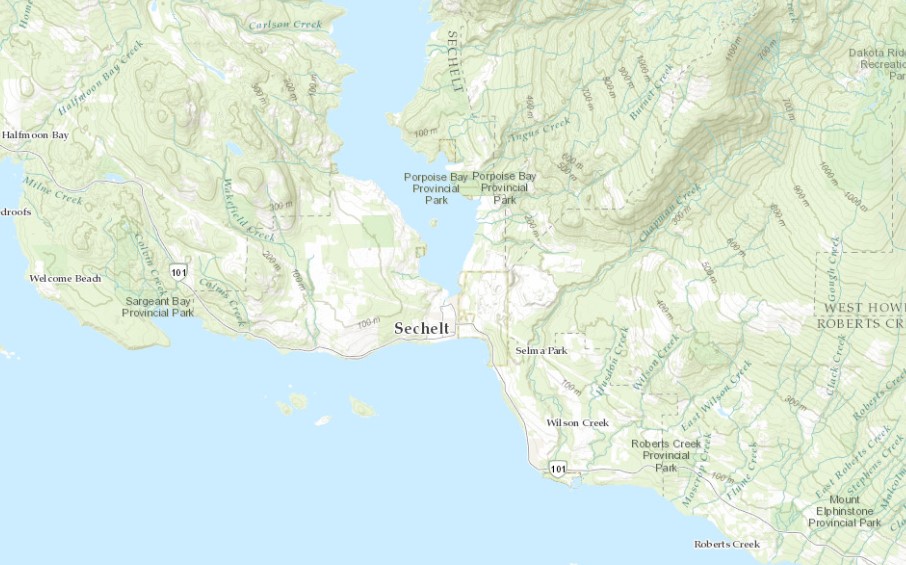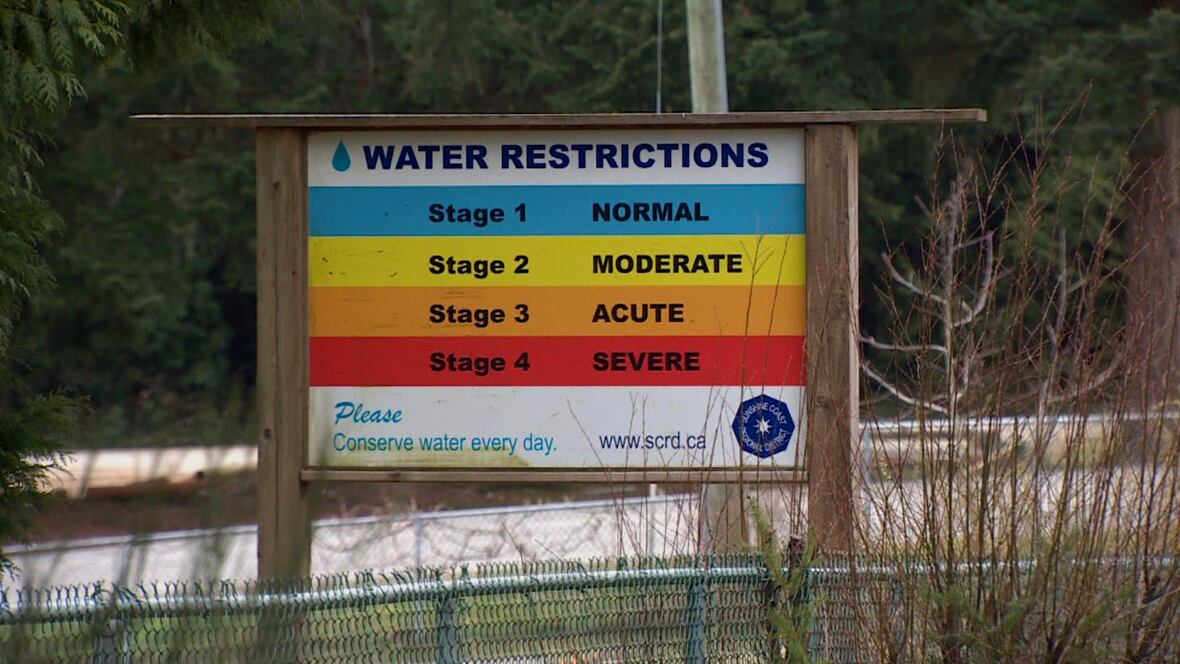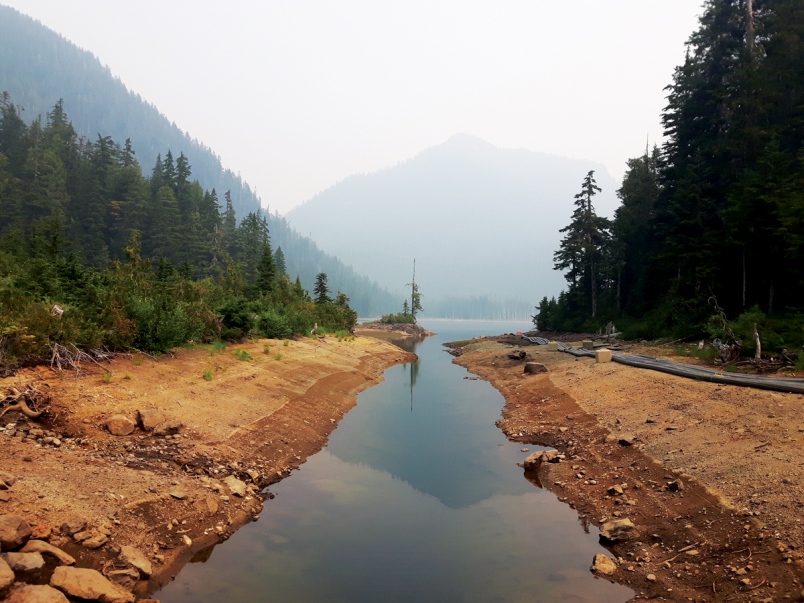‘We’ve literally run out of water’ – Mayor of Sechelt Bruce Milne, 2017
For a district affectionately referred to as the ‘land between two waters’, Sechelt is struggling to supply its residents with enough of the important resource.
The town of roughly 10,000 people frequently suffers through drought conditions, especially during summer months, making water a highly contentious topic and a constant source of concern.
Sechelt is located on the Sunshine Coast on the southern mainland of British Columbia, Canada, across the Georgia Strait from Vancouver Island and accessible from the city of Vancouver by ferry.

The town of Sechelt, situated between the Strait of Georgia and the Sechelt inlet (Source: ArcMap)
On the Sunshine Coast, the combination of drier winters, warmer summers and a growing population has resulted in water restrictions that last longer and are more severe than the rest of southwest British Columbia (McElroy, 2019). For three of the last four summers, the Sunshine Coast Regional District (SCRD) imposed the maximum restriction level, Stage 4: severe, with extensive bans on water use such as watering lawns, commercial farms, washing vehicles, filling pools etc. (Woodrooffe, 2019). Restrictions of this severity have had detrimental impacts on residents and the wider community, with the elderly finding it particularly difficult to cope (Cox, 2018) and many food producers being fearing loss of livelihoods (Roberts, 2015).

These signs are found throughout the Sunshine Coast, informing residents of the different water restriction stages that can be imposed (Source: Martin Diotte)
Whilst the SCRD have had a long-term water management plan since 2013, designed to ensure water security until 2036 (SRCD, 2013), those in charge have only realised in recent years that this plan doesn’t take into account the speed at which climate change is impacting the water supply (Kelly, 2017). In fact, the water crisis appears to be the first time a B.C. community in close proximity to a major urban centre (in this case Vancouver) has had to struggle with the impacts of climate change on a once abundant water supply (Cox, 2018).

Water levels in Chapman Lake, an important source for Sechelt, often drop to dangerous levels during summer months (Source: SCRD)
There has been a call from residents for action to be taken to address this pressing issue and combat the looming threat of drought. Whilst development has been undertaken in other municipalities on the Sunshine Coast, most notably in the neighbouring town of Gibsons where the water system is being improved to reduce dependence on SCRD supplies (Eckford, 2018), development in Sechelt consistently lags behind. This has been a big source of unrest amongst Sechelt residents, which was particularly apparent during the recent election earlier this year where water dominated discussion; inaction on the issue was part of the reason for a big political upheaval where four councillors and the mayor lost their bids for re-election. The new council is working on developing an improved action plan to better manage water in the area, which is set to be released next year and will include the development of new wells and reservoir sites (McElroy, 2019).
Our project aims to assist the SDRC with their goal of developing an action plan for water security by determining the most suitable location within the Sechelt municipality for a new groundwater well. This new well will help to boost water supply to meet demand, especially during summer months.
Project Objectives:
- Identify relevant characteristics that will impact the suitability of sites for a new well, and obtain and process data relating to these characteristics at the appropriate scale and resolution
- Ascertain the relative importance of each factor
- Use multi-criteria analysis to determine the most suitable site for the new well
Information regarding the data we used and the methods we employed in our investigation can be found on the ‘Data and Methods’ page (available here).